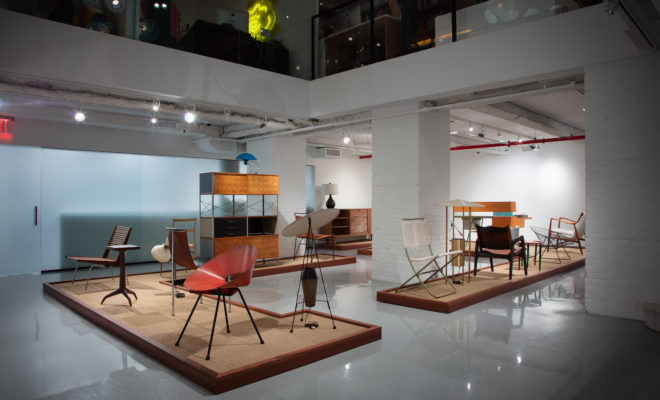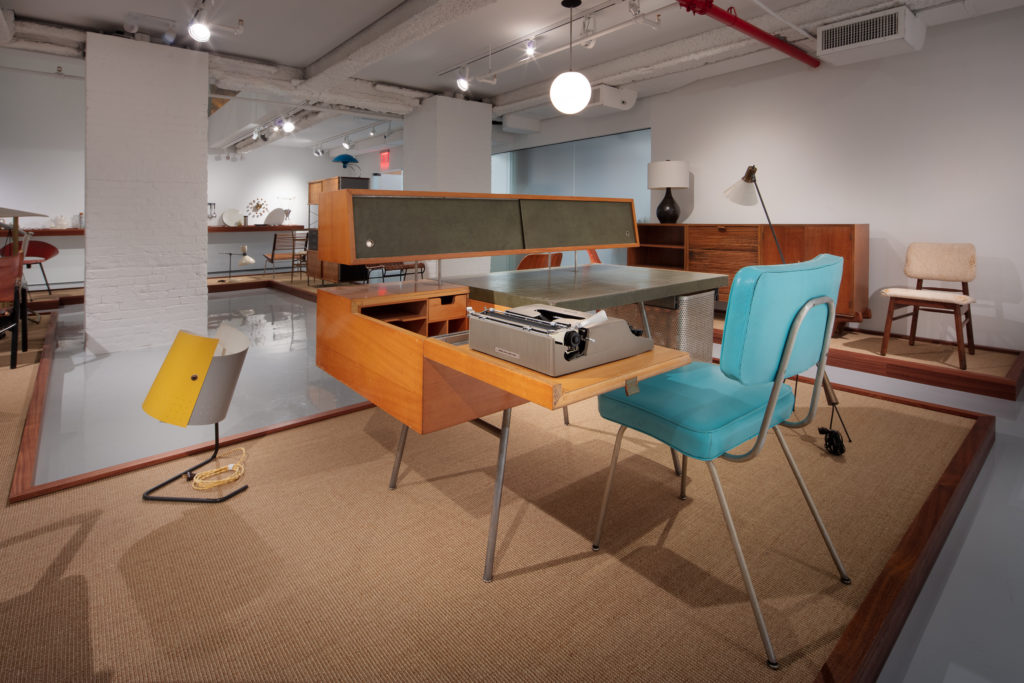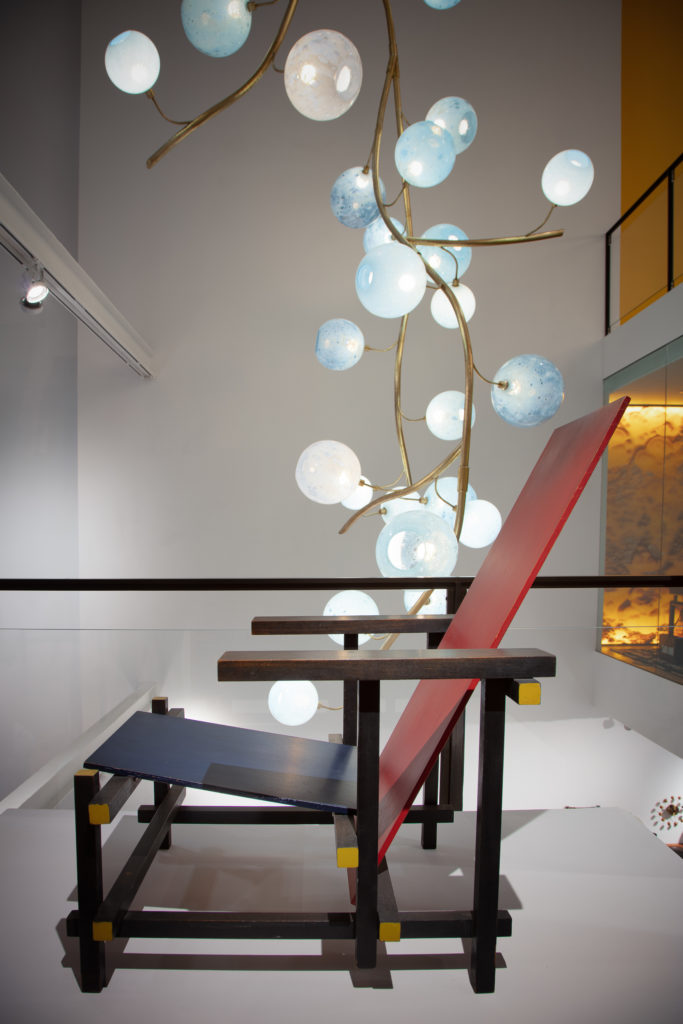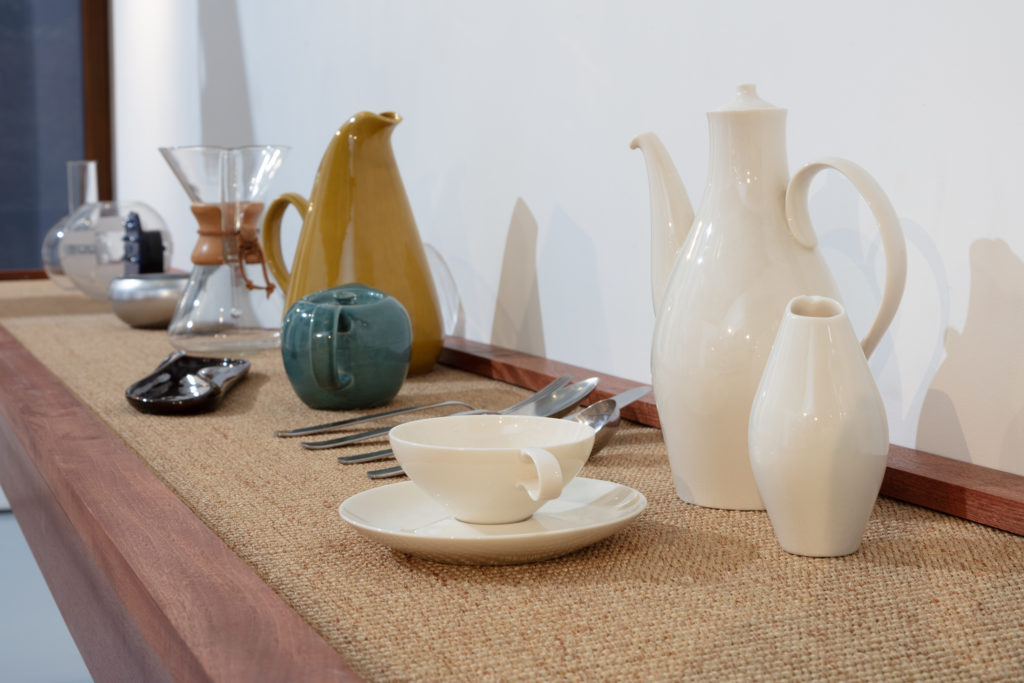 All photos by Joe Kramm / R & Company
All photos by Joe Kramm / R & Company
Exhibition
R & Company Revisits the Good Design Phenomenon
Tyro collectors in search of “good design” will find examples at Modern in Your Life: The Good Design Phenomenon 1934–1959, on view through December 21 at R & Company’s location at 64 White Street in New York City.
Curated by James Zemaitis, director of museum relations at the gallery, the exhibition includes Sven Wingquist’s aesthetically-pleasing, yet highly streamlined $100 self-aligning ball bearing that he designed in the early 1900s— well before the Machine Art exhibition at the Museum of Modern Art in 1934. “Our show is a survey of how MoMA—symbolized by the 1907 ball bearing—developed its ‘good design’ program in the 1950s,” Zemaitis says. It provides a window into the historical significance of good design in mid-century American museums.

George Nelson’s Home Office Desk, model no. 4658, designed 1946, and manufactured by Herman Miller with Nelson’s Chair Model No. 4671 in upholstery and zinc-plated steel.
Displayed on one wall are, in chronological order, such everyday household objects as a cocktail shaker, a Revere Ware saucepan, a Chemex coffeemaker, and a set of Russel Wright dinnerware— all iconic examples of mid-century design that celebrated progressive ideals, function, and “good” taste, and had been considered “useful” objects by MoMA curators. Other show highlights include a side chair by Charles Eames and Eero Saarinen that garnered first prize in the seating for a living room category at the 1941 Organic Design Competition at MoMA, as well as a “rudder” coffee table and stool designed by Isamu Noguchi, and chairs by Donald Knorr, Greta Magnusson Grossman, Pipsan Saarinen Swanson, Gio Ponti, and Finn Juhl. Lighting includes pieces by Grossman, Lester Geis, Kurt Versen, Walter Von Nessen and Marion Geller.

Red-Blue Chair designed by Gerrit Rietveld, 1918-19, and made by Gerard van de Groenekan, 1956-63.
At the entrance to the exhibition, which is on the gallery’s lower level, is a Gerrit Rietveld Red Blue chair of the early 1950s, “an example of which Philip Johnson had donated to MoMA from his personal collection on the occasion of the De Stijl show he organized there at the time,” Zemaitis says. Like the other objects MoMA had exhibited and acquired, “the chair enjoyed even broader prestige and value by its inclusion in the museum’s permanent collection.”

Museum Dinnerware by Eva Zeisel, designed 1942-45 and produced 1945-48, flanked by Russel Wright’s American Modern Dinnerware, designed 1937-39 and produced 1939-59.
Zemaitis believes that would-be collectors can find inspiration in all these objects. “People have forgotten how easy it is to find and purchase affordable, museum-quality design,” he says.










